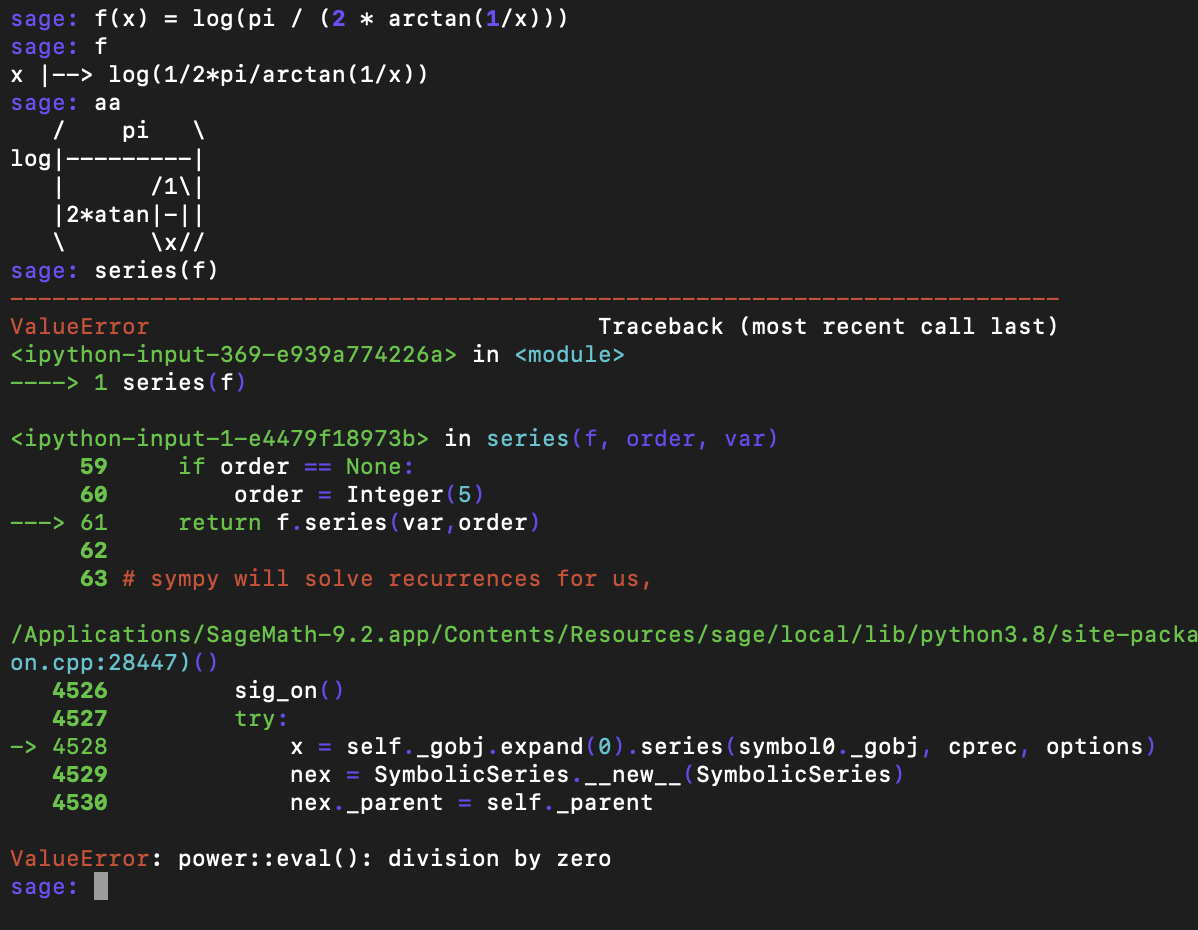A Wild Arctan Formula
23 May 2021
Yesterday a good friend of mine sent me the following bizarre formula:
This is listed as formula
First let’s rewrite this product a little bit more compactly. We want to show
I only know one way to handle limits of products, so let’s hit everything
in sight with
We know that as
My first instinct is to taylor expand at infinity. That is, let’s write
and expand this at init.sage to automatically compute a
series expansion at

So we do some googling for
This is really neat (and has a nice geometric proof), and lets us rewrite our function as
Sage will happily give us a series expansion of this and we learn
so our sum becomes
But now we’re basically done! Our error term vanishes in the limit, since
where
We know that
This, at last, tells us that our sum is
and so our product is
as desired.
Notice nothing we did was hard. Not only does this show the power of calculus (I feel like the more math I learn the more I respect basic calculus), it also shows the power of sage to quickly and easily do things like taylor expansions for us. Of course, with some extra time to think about the problem, I’ve come up with a way you could see this without needing to taylor expand anything too tricky3, but before you polish the edges of a proof, it’s nice to have something, and sage really makes that “first draft” version of a proof easier to find.
-
While writing this blog post, I tried the taylor series implementation, and it actually did work!

This would have made the whole process go a bit more smoothly, but we wouldn’t have learned the fun formula, so I’m weirdly glad that the power series implemtation has slightly different behavior from the taylor series implementation… Presumably because one is formal, while one is analytic?
It is nice that sage could have directly told us that our summand looks like
-
It’s pretty clear that near
Next we’ll need the fun fact from above, that
Putting these facts together, we can pretty quickly get
and we could finish off the proof from here.
Note, though, that even though we avoided sage (or otherwise computing an awful taylor expansion by hand), the price we paid was more background knowledge. I happened to know this series, as well as this trick for swapping
Alright, I’ll get off my soapbox now :P ↩